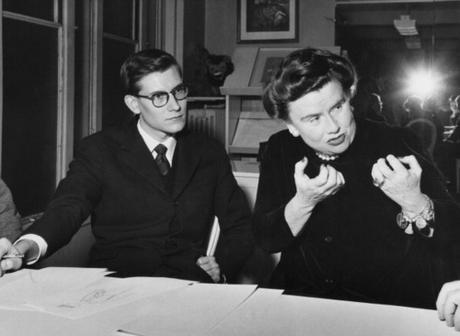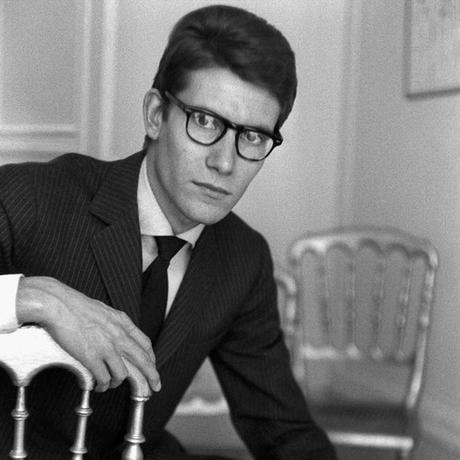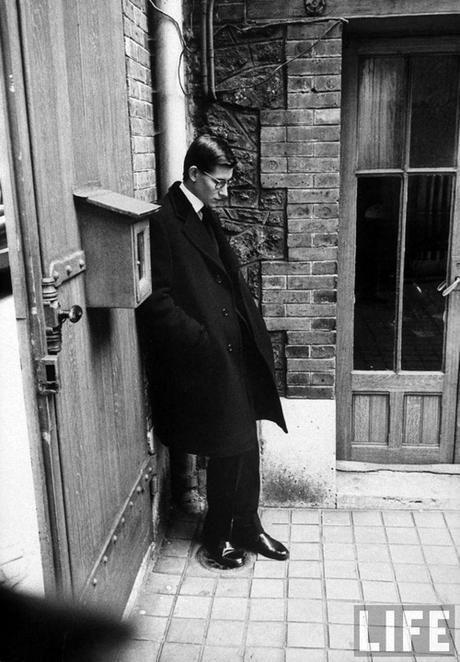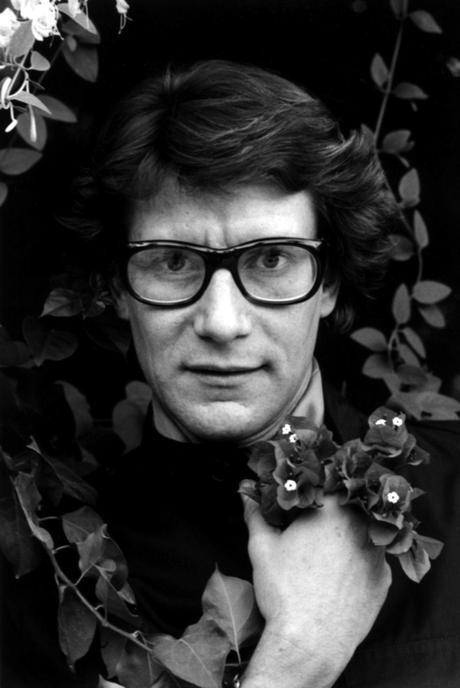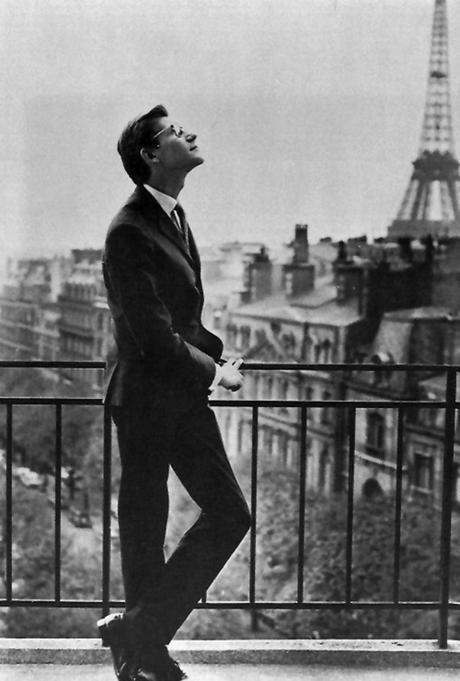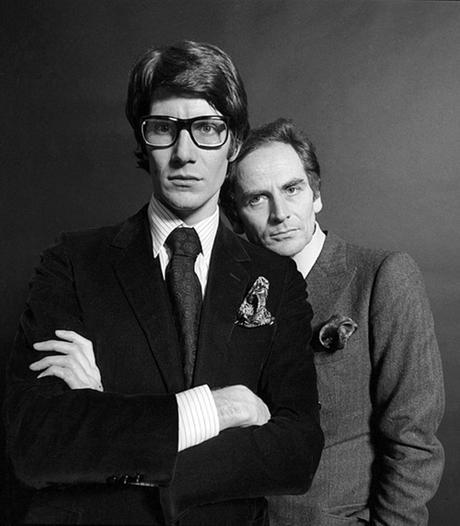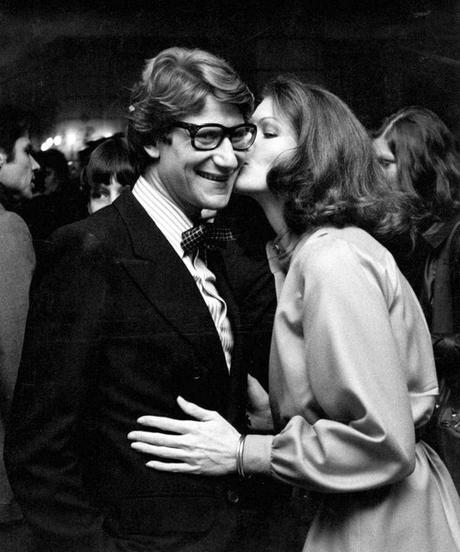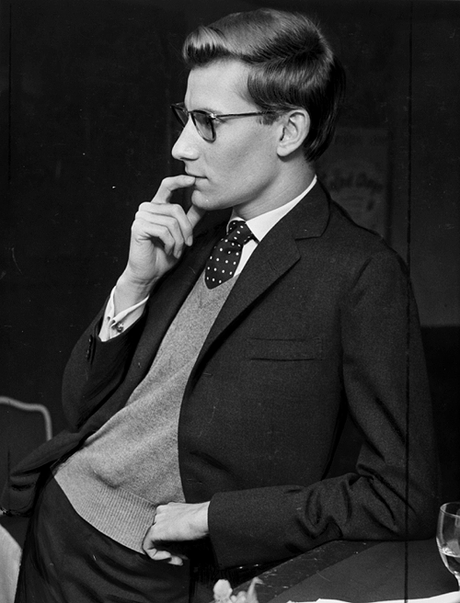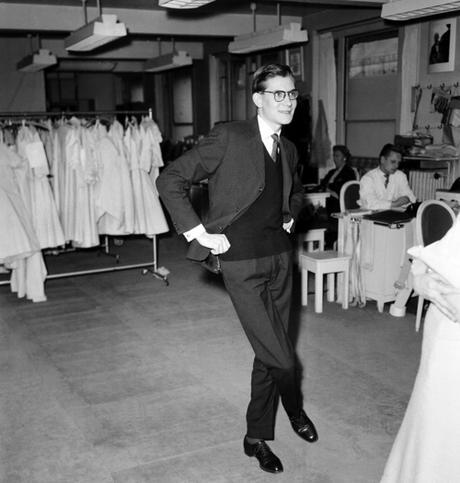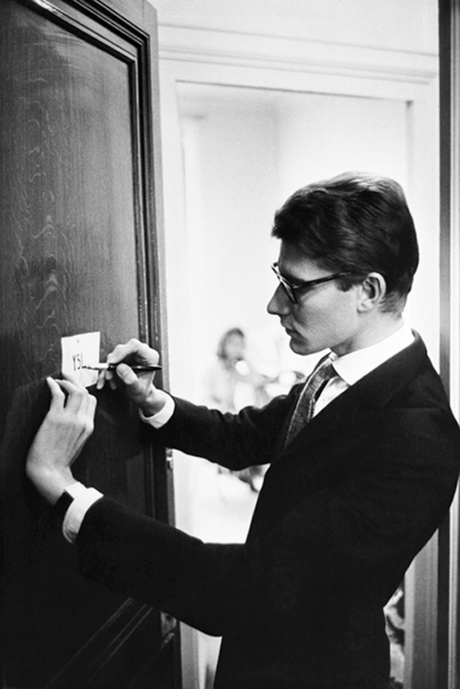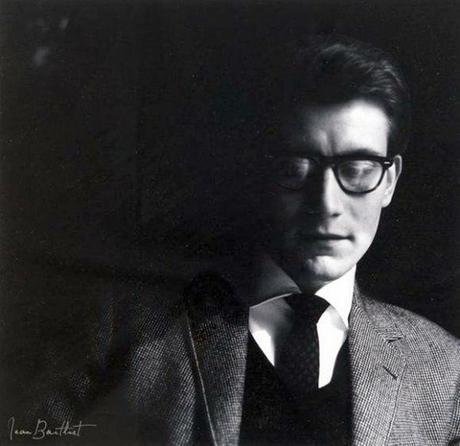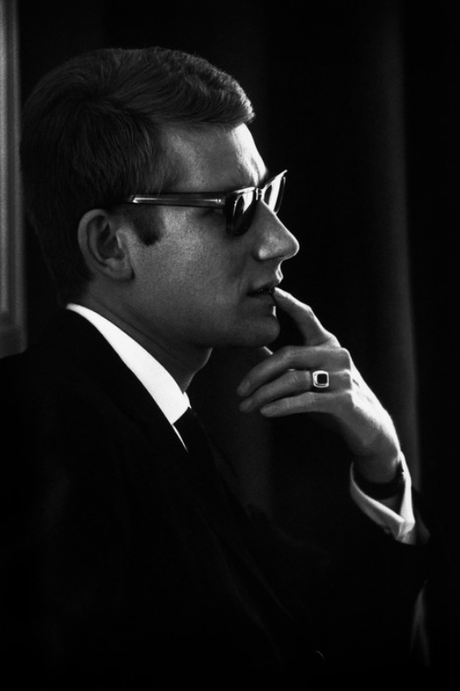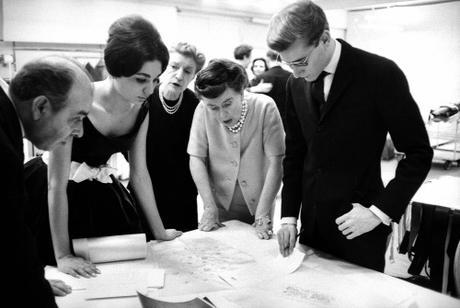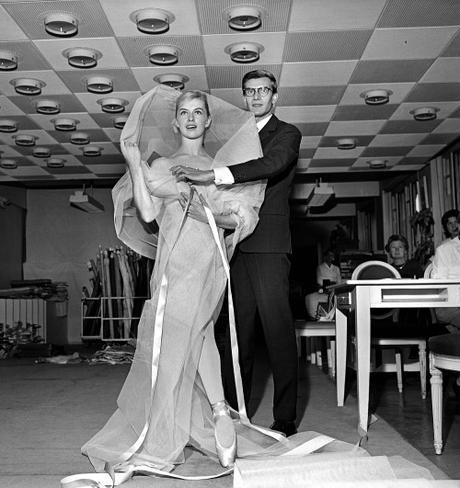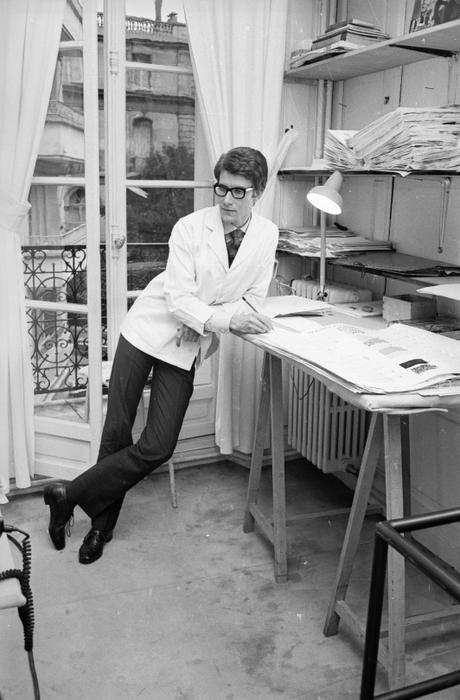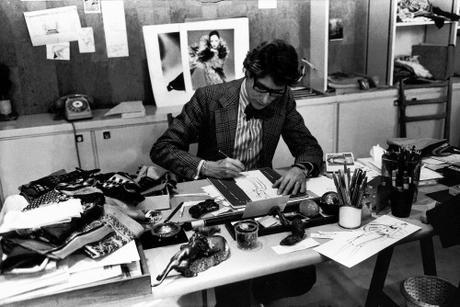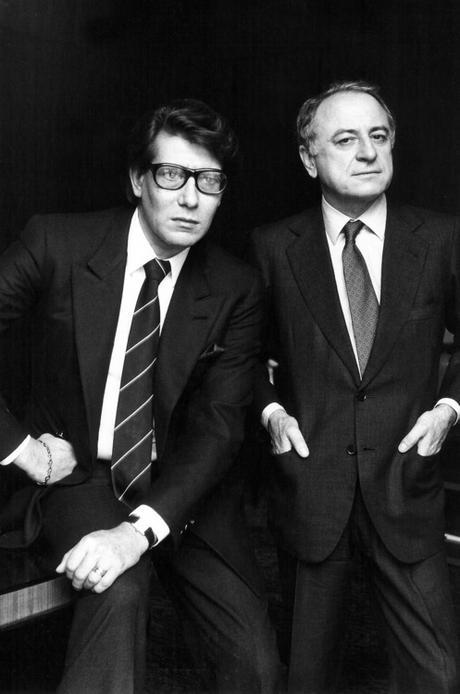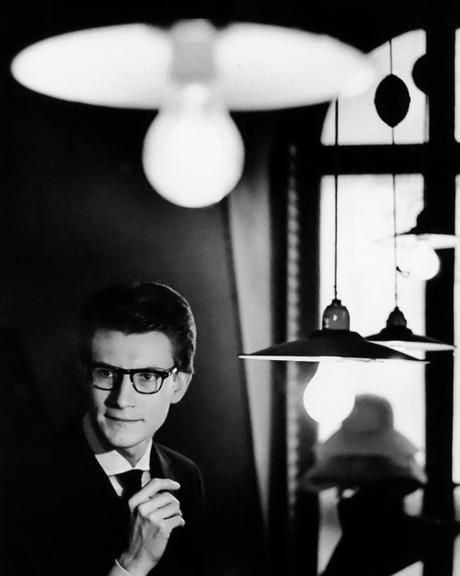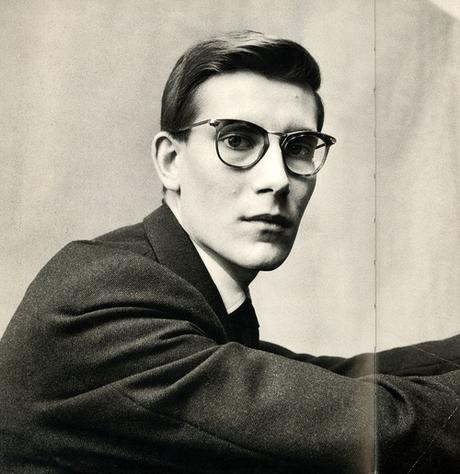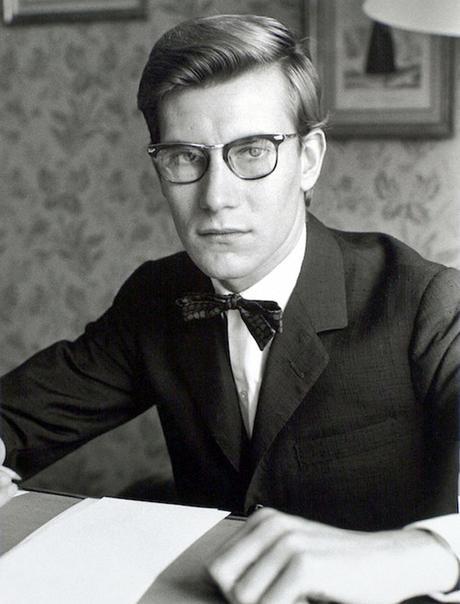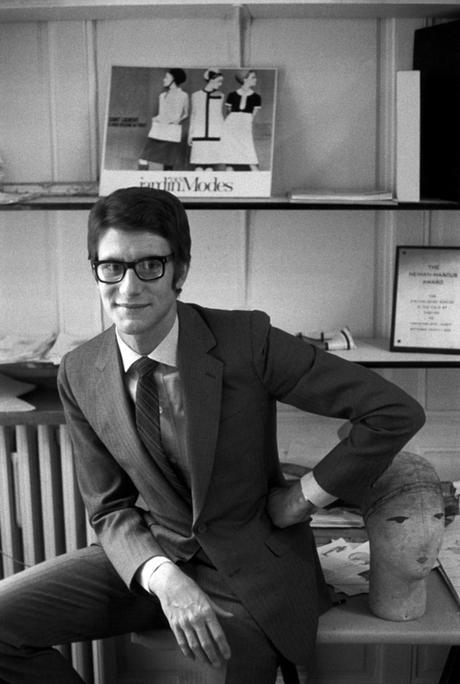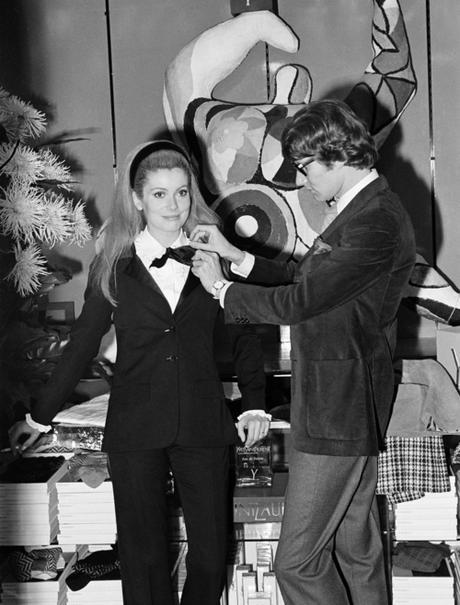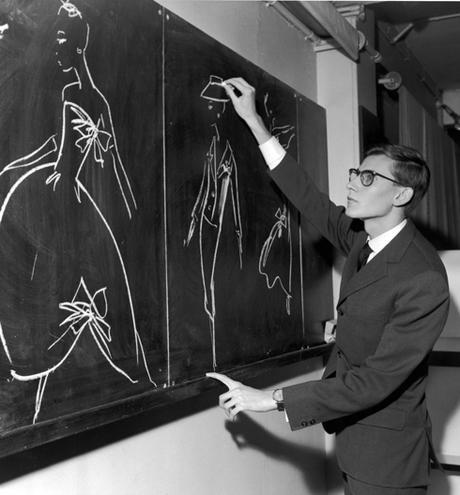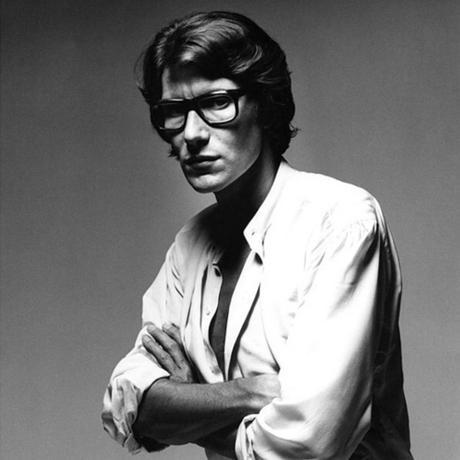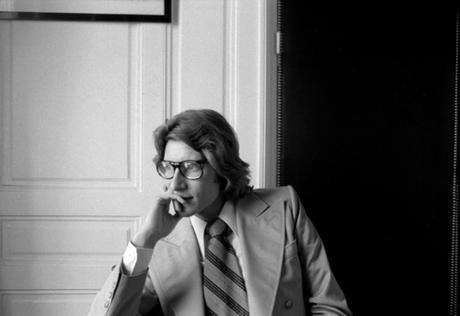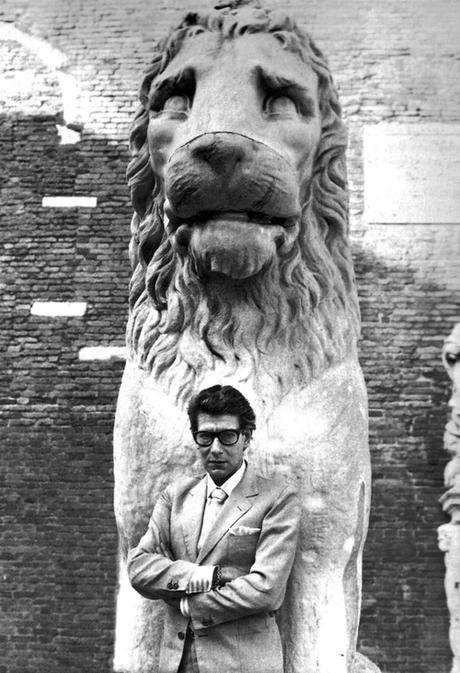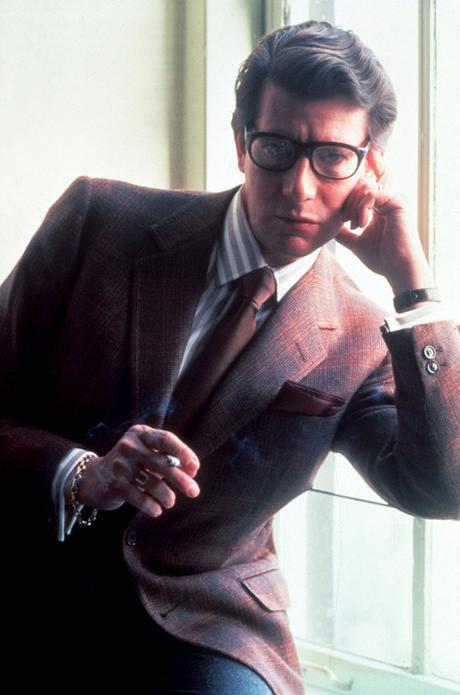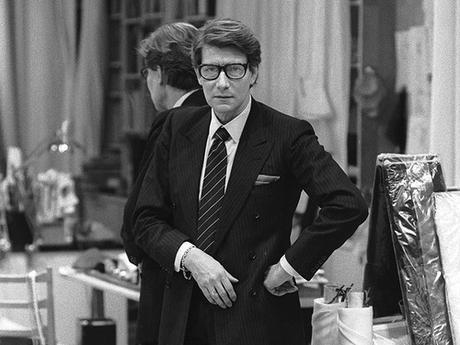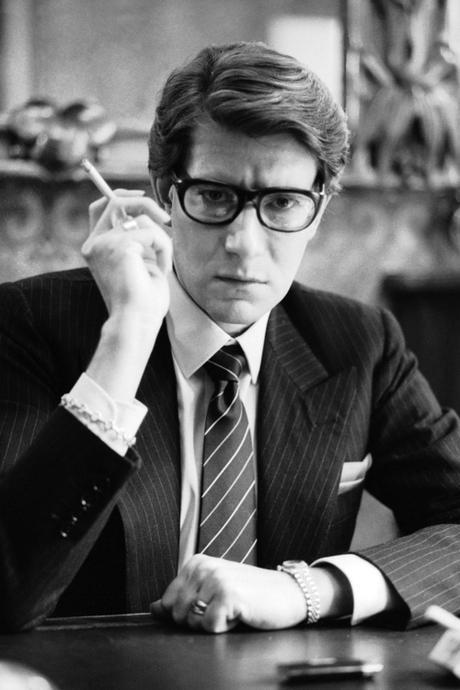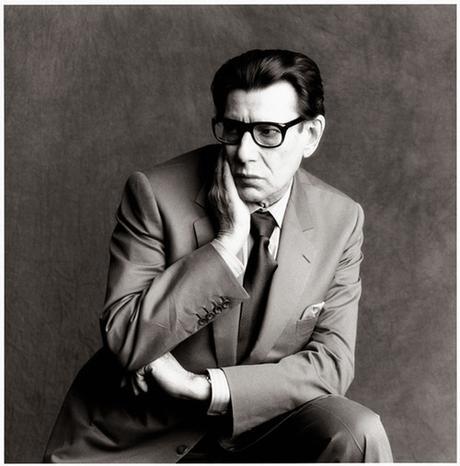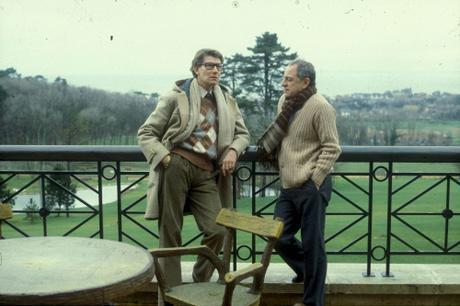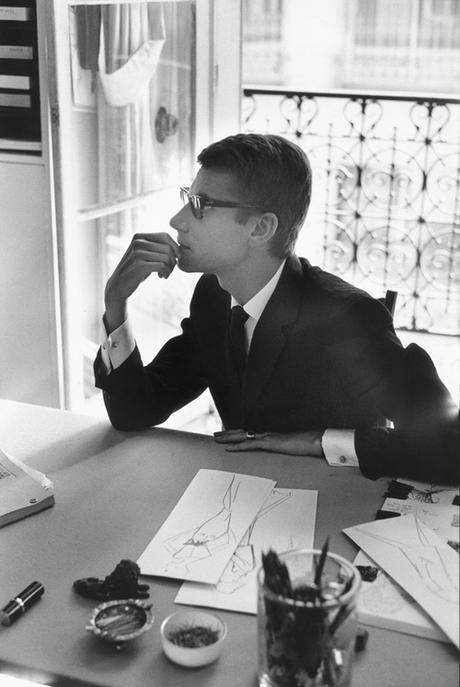
Yves Saint Laurent’s birthday was this past Saturday (or, rather, it would have been if he were still alive). Of all the designers in the 20th century, few have been as influential – or even as well-dressed – as this Algerian-born French designer. Working as a design assistant to Christian Dior in his late teens, he unexpectedly took over the company at the young age of 21, when Dior died of a massive heart attack.
One of Laurent’s first breakthrough designs was his trapeze dress. Narrow and fitted through the shoulders, it featured long lines that jutted into the skirt and a loose, comfortable waist. The design built on Dior’s famous A-line silhouettes while still allowing Laurent to establish himself as a designer. Over the next decade, Laurent’s other designs continued to build on the same theme – modernist silhouettes, long lines, and sharp angles. Take a look, for example, at the Mondrian collection, Laurent’s work for Catherine Deneuve in the film Belle de Jour, and of course, his forever-famous Le Smoking suit.
Many of those same elements defined how he dressed. We tend to think about men’s tailoring in two ways. The first is to ascribe certain styles to regions, so that a jacket can be described as French, Southern Italian, Florentine, British, or American. The other is to think of jackets in terms of shoulder constructions – soft and natural for something relaxed; padded and built-up for something authoritative.
There’s another way to think about tailored clothing: the lines in the overall silhouette, which can either be soft and curvy or sharp and angular.

Throughout much of the 1960s, Laurent wore suits that were lightly padded through the shoulders and featured bald sleeveheads that you could cup with your hands. The silhouettes were sharp, decisive, and very modern – not unlike the designs he made for women. The longer jackets and narrower lapels elongated his thin frame; the straight-cut lapels gave his jackets a razor-sharp edge; and the closely hugging skirts flowed so smoothly into his narrow trousers that they seemed to emphasize his long lines. Compare the photos you see here to some of the suits you might find in Italy, where unstructured shoulders, shorter jackets, and wider lapels lend a softer, rounder look.
You rarely see suits like these anymore. Slim suits today tend to be just shrunken down all over – so that you not only get a narrowing of the frame, but also a shortening of the jacket (Thom Browne often gets credited for this, but Hedi Slimane did the same at Dior). When you shorten the jacket, you transform the suit from the chic and elegant style you see here to something more boyish.
Laurent later wore fuller fitting clothes in life, and for a time, he even sported those massively wide, disco-inspired lapels (which looks terrible on most people, but great on him). Even then, however, there was always something angular and decidedly modern about his look. More than the region they’re from or their shoulder constructions, sometimes tailored clothing is best described by the softness or sharpness of its lines. Laurent built his style on the latter.
